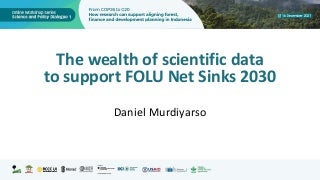In recent years the role of peatlands in landscape restoration has come under renewed scrutiny as scientists seek solutions to keep global warming in check. Known as bogs, mires, moors or muskegs, peatlands are effective carbon sinks, making up more than half of all wetlands worldwide and equivalent to three percent of total land and freshwater surfaces. Built up over thousands of years from layers of decayed, waterlogged vegetation, they have been drained for agriculture, commercial forestry and fuel. A third of surface soil carbon and 10 percent of global freshwater resources worldwide are stored in peatlands. They could play a key role in meeting U.N. Paris Agreement targets established in 2015 aimed at keeping post-industrial era global warming in check.
Notice: Undefined offset: 0 in /home/ft4user/foreststreesagroforestry.org/wp-content/themes/FTA/template-parts/content-news.php on line 9
Notice: Trying to get property 'dcDocumentUri' of non-object in /home/ft4user/foreststreesagroforestry.org/wp-content/themes/FTA/template-parts/content-news.php on line 9
Notice: Trying to access array offset on value of type null in /home/ft4user/foreststreesagroforestry.org/wp-content/themes/FTA/template-parts/content-news.php on line 9











